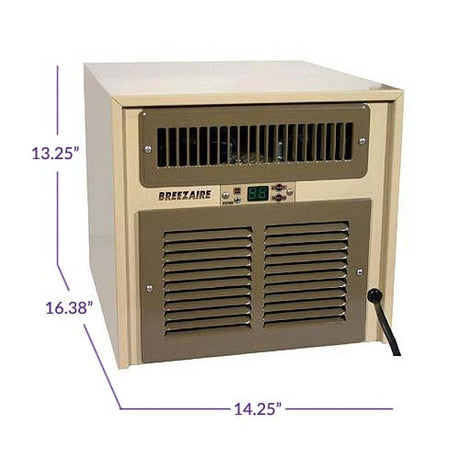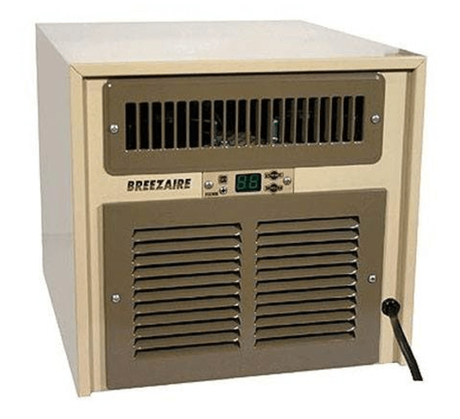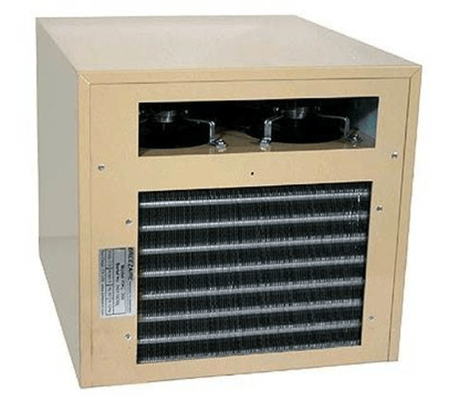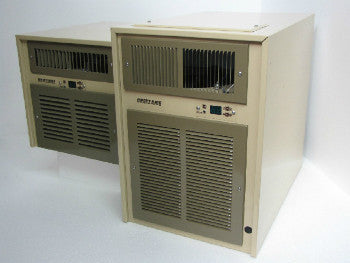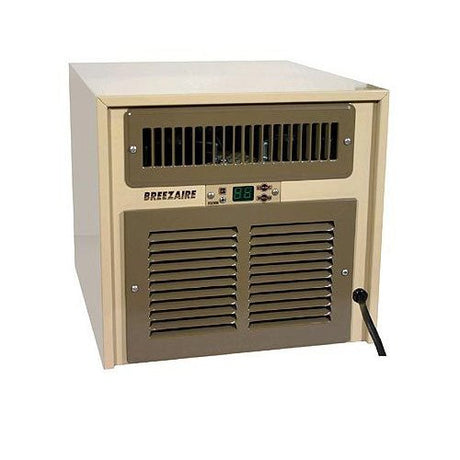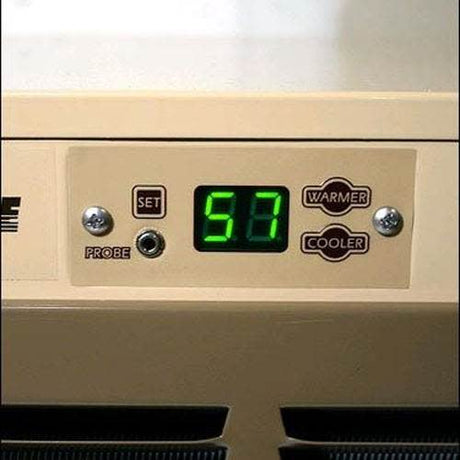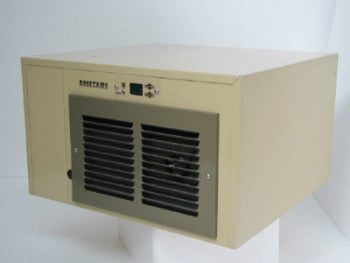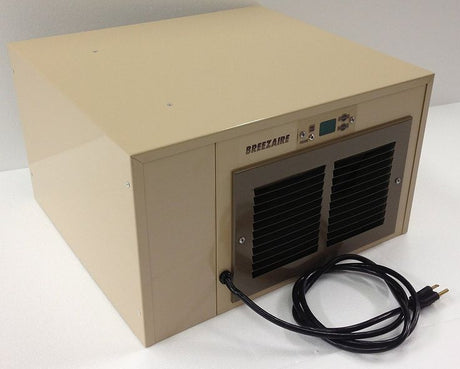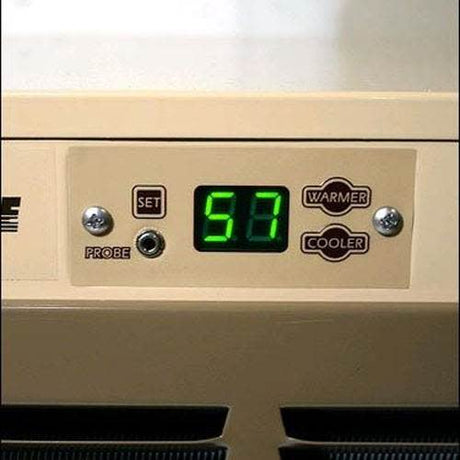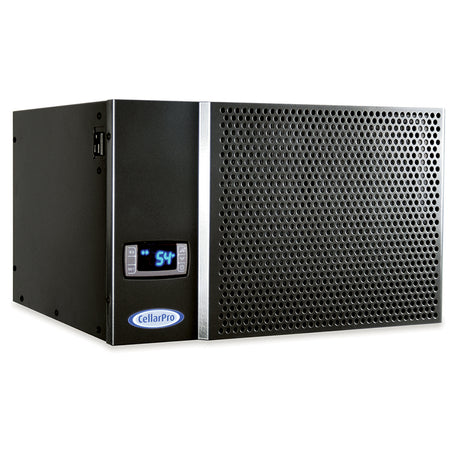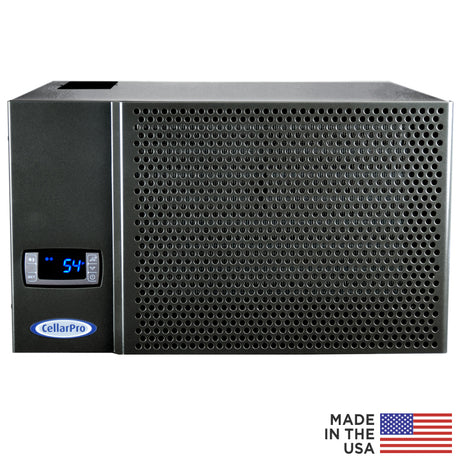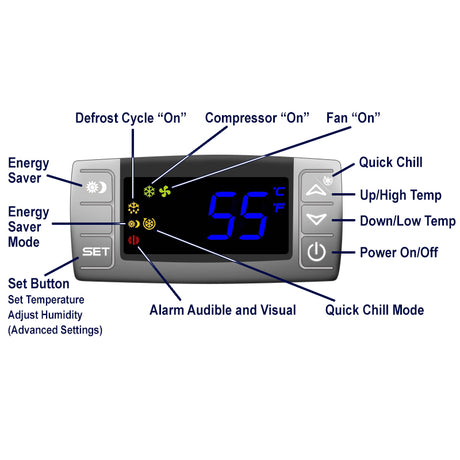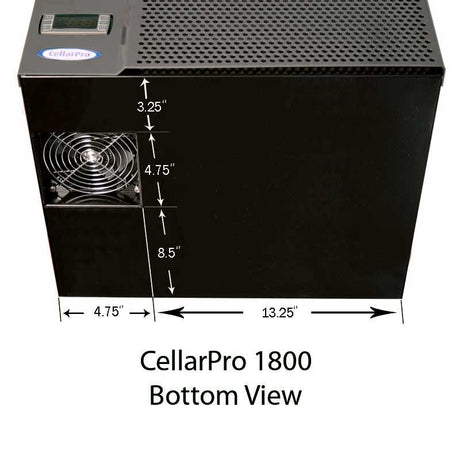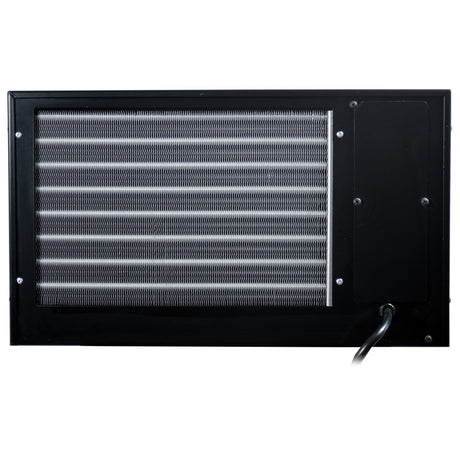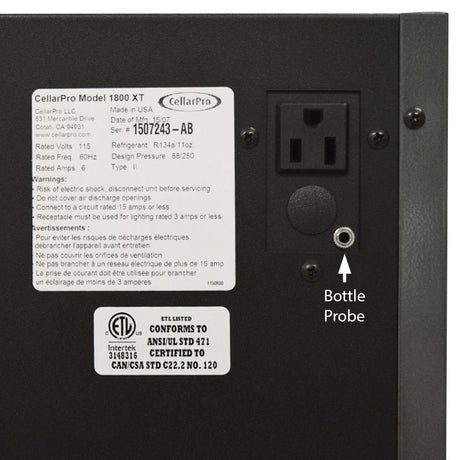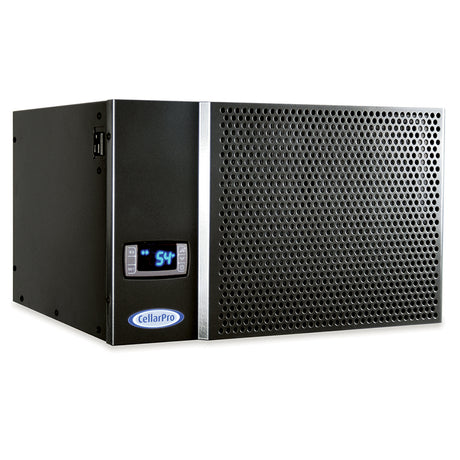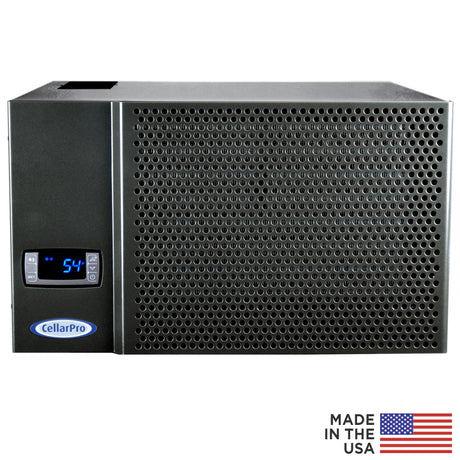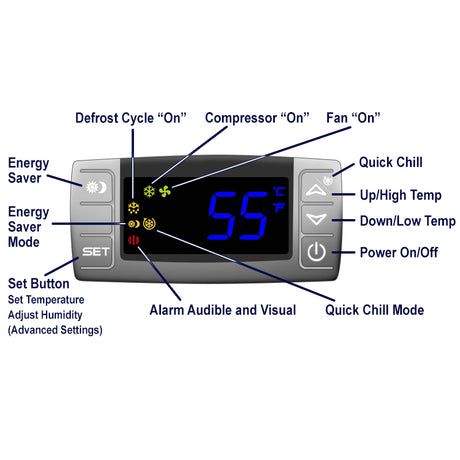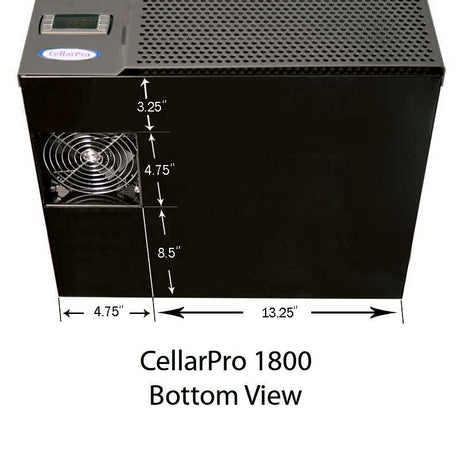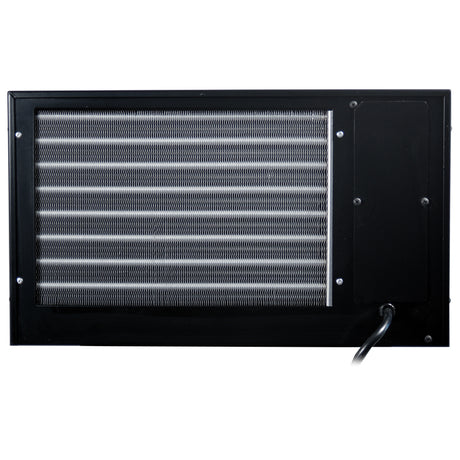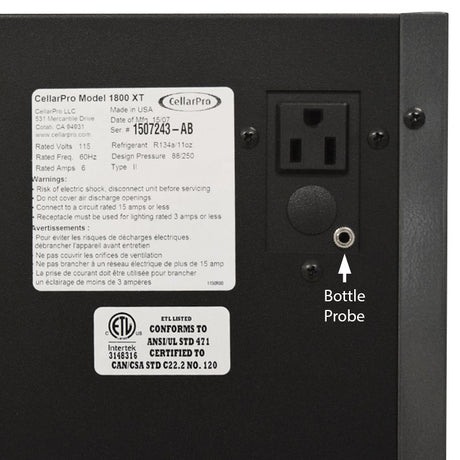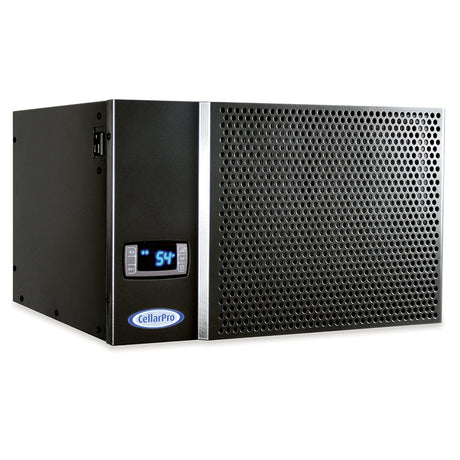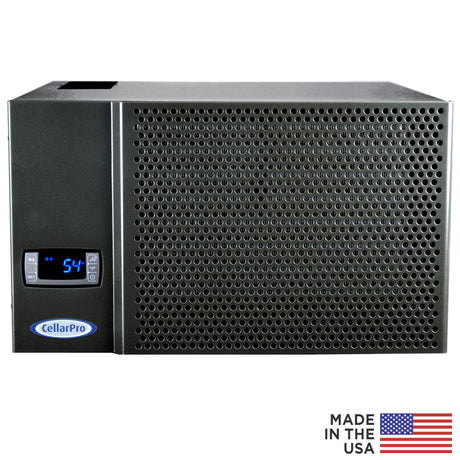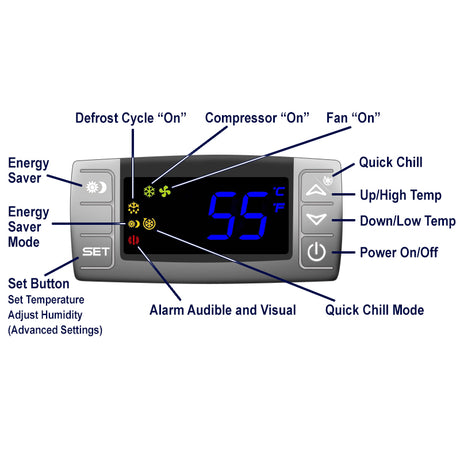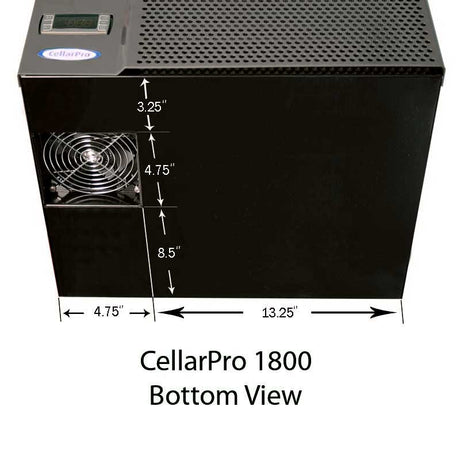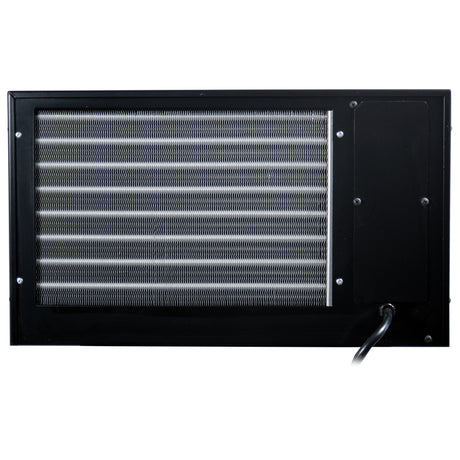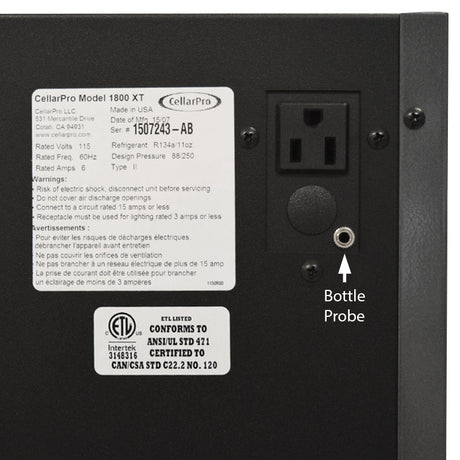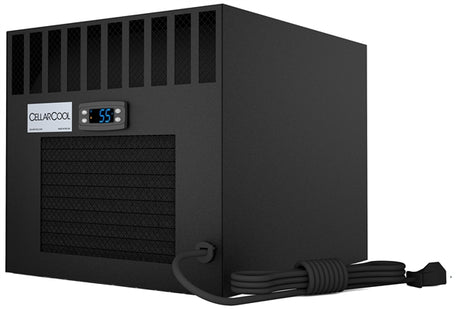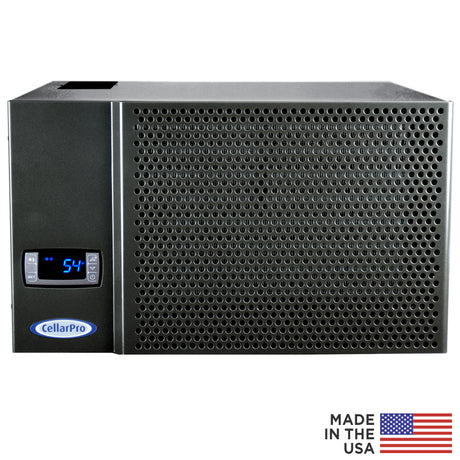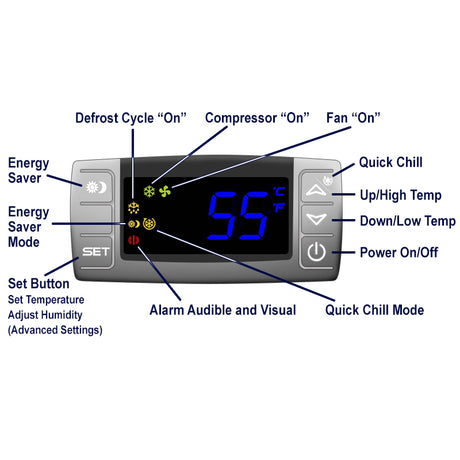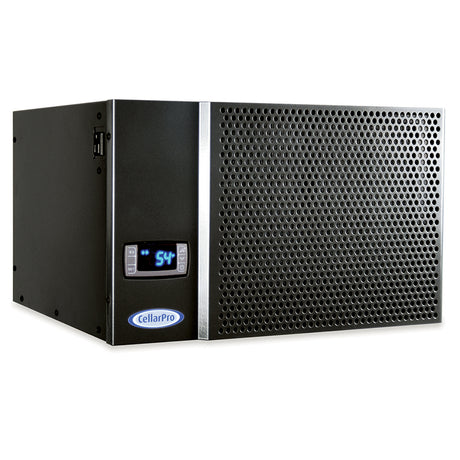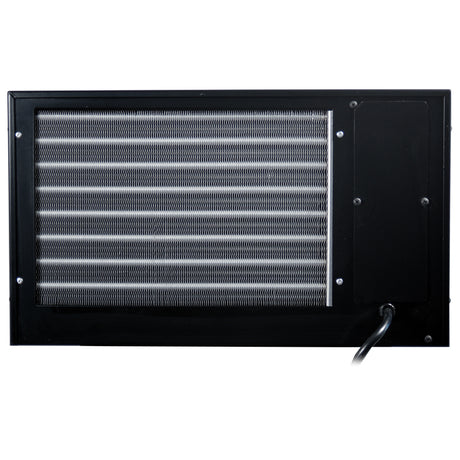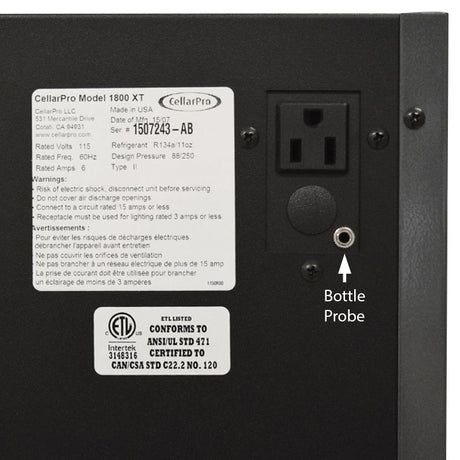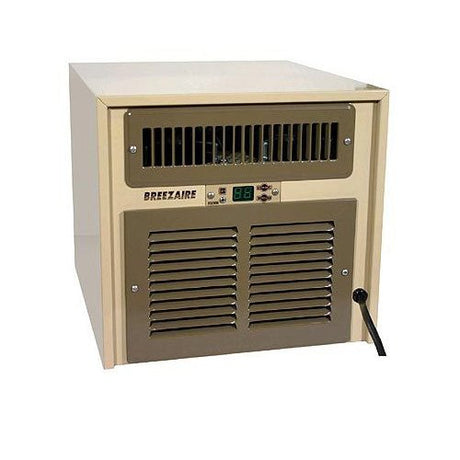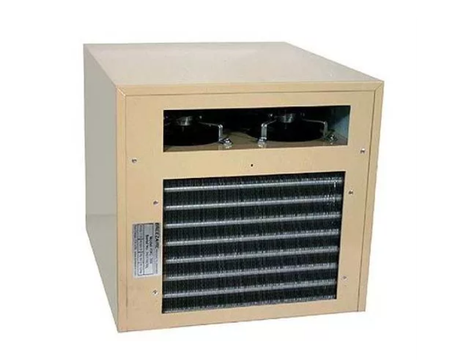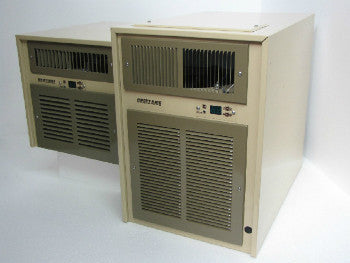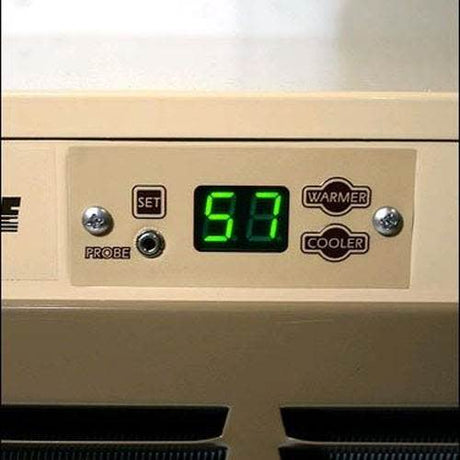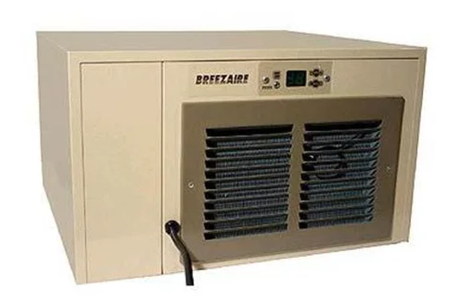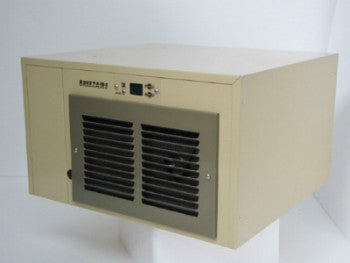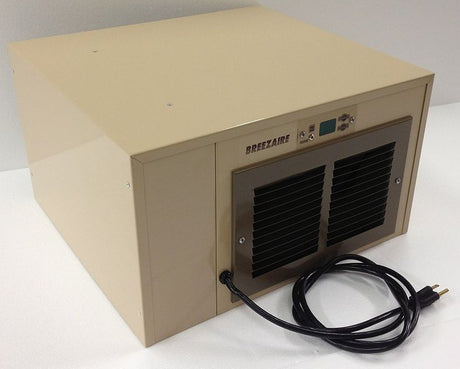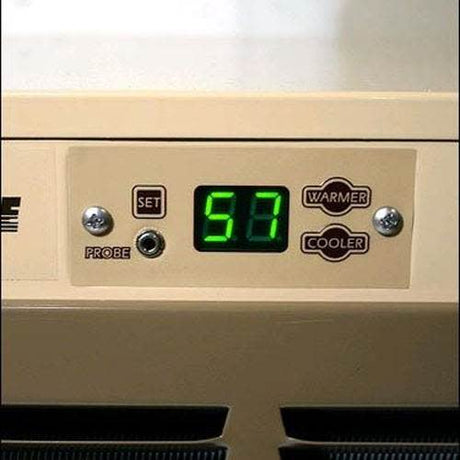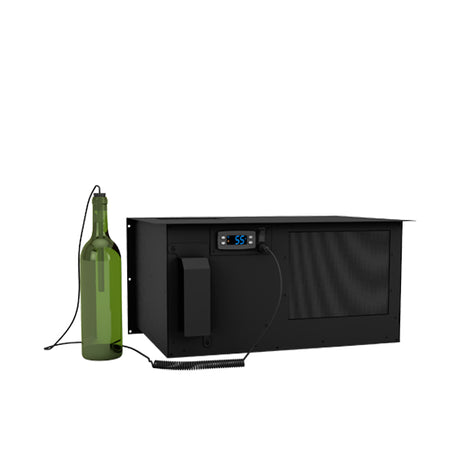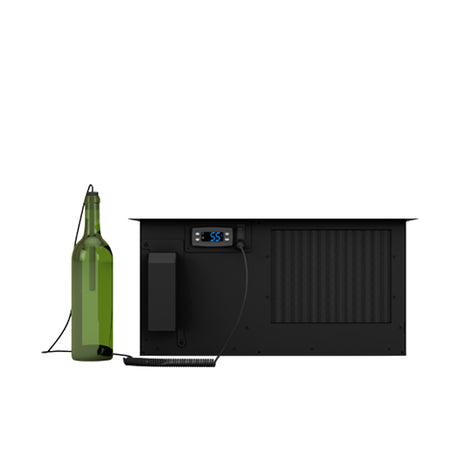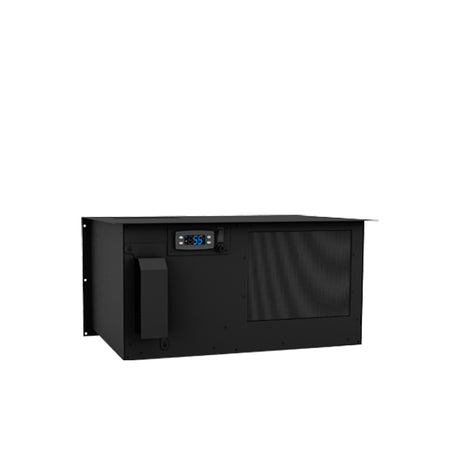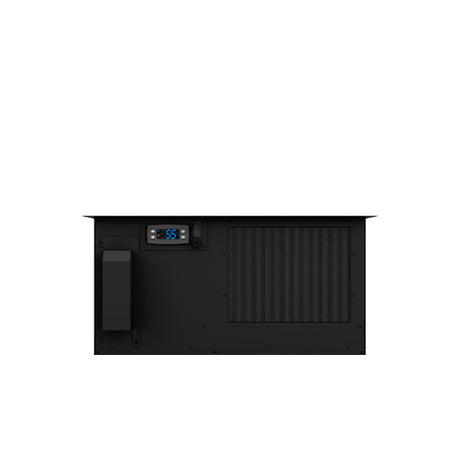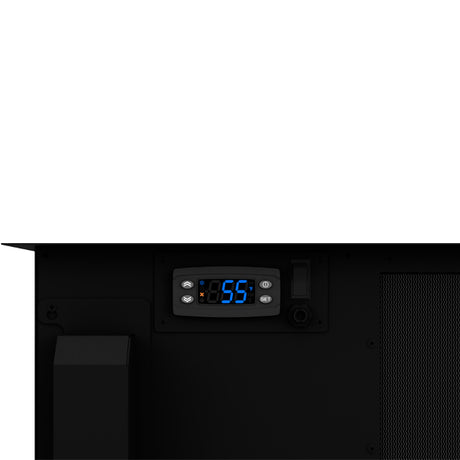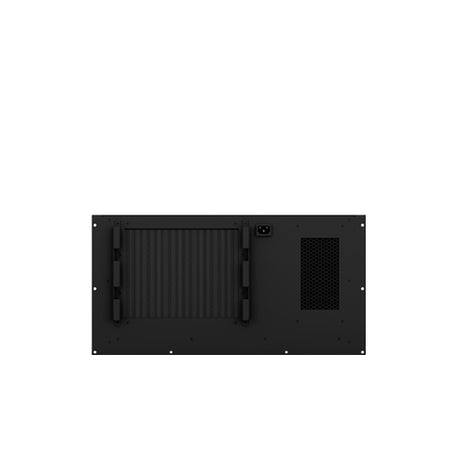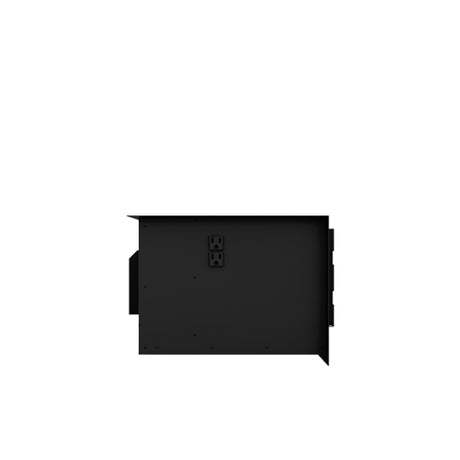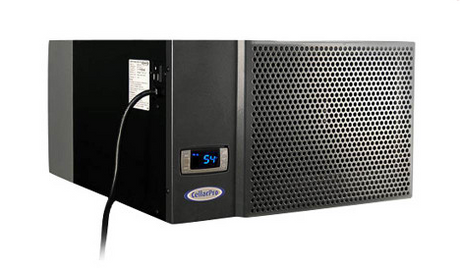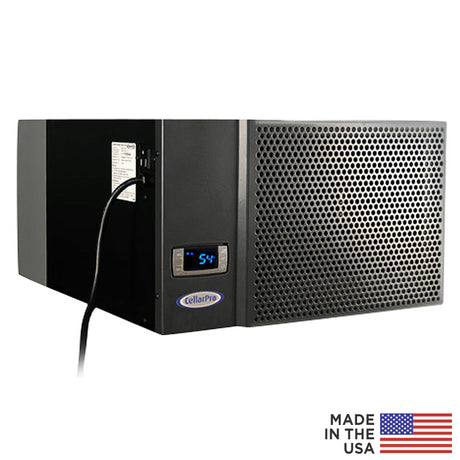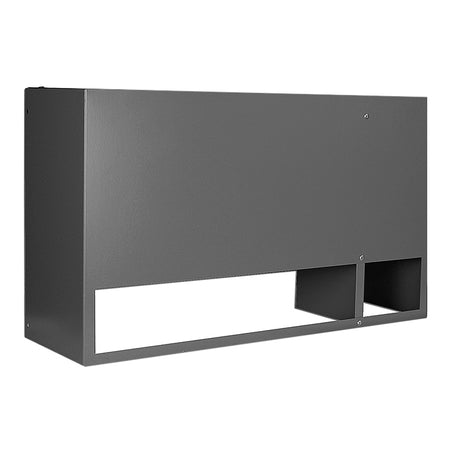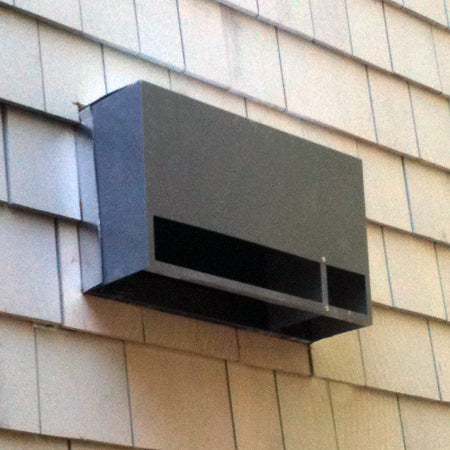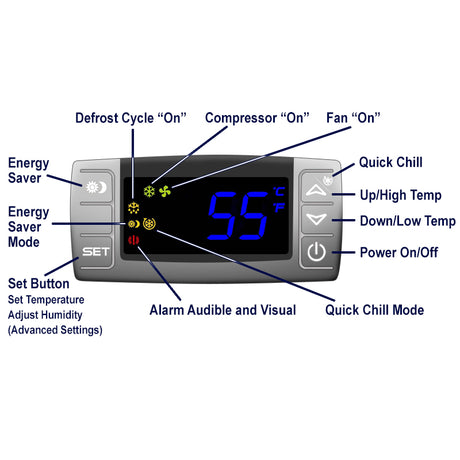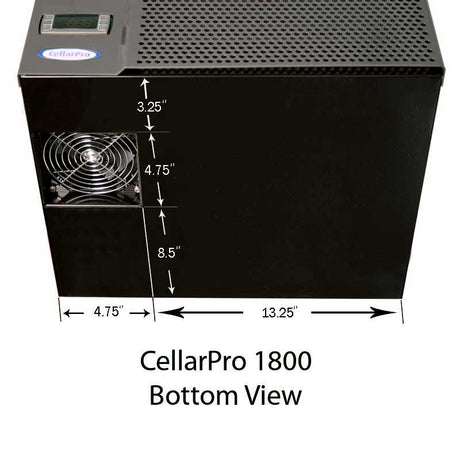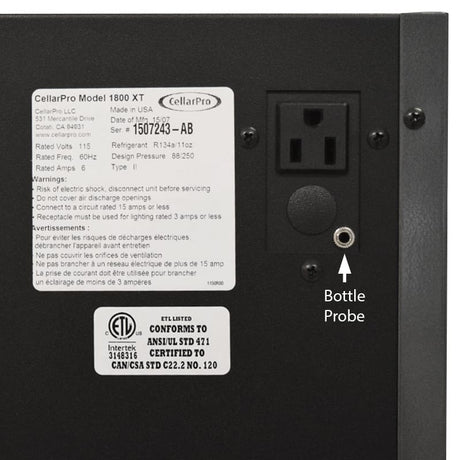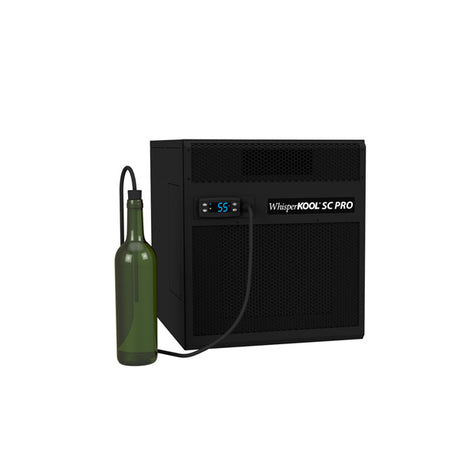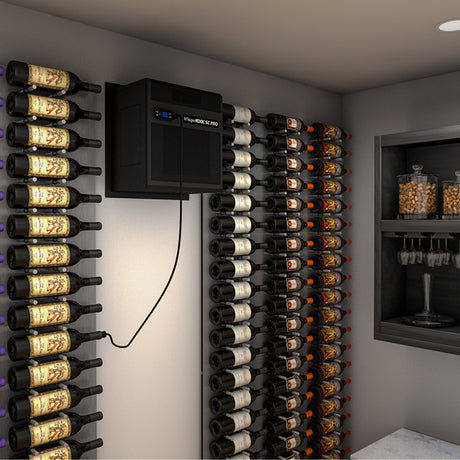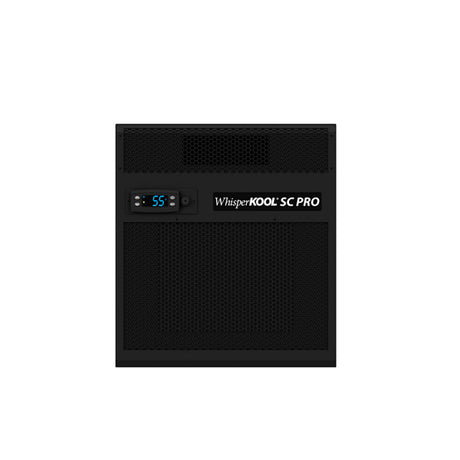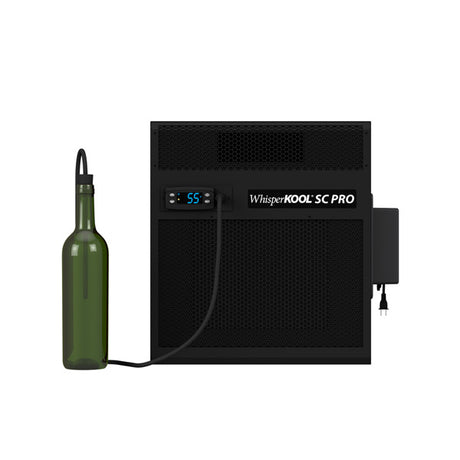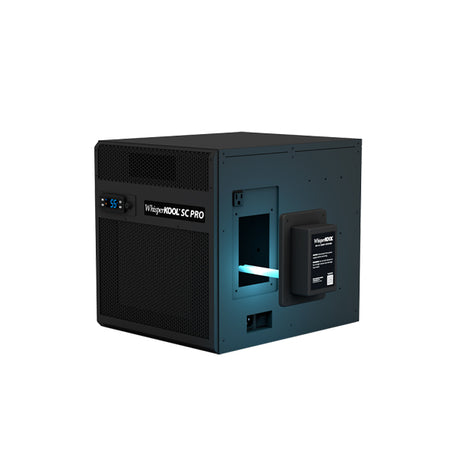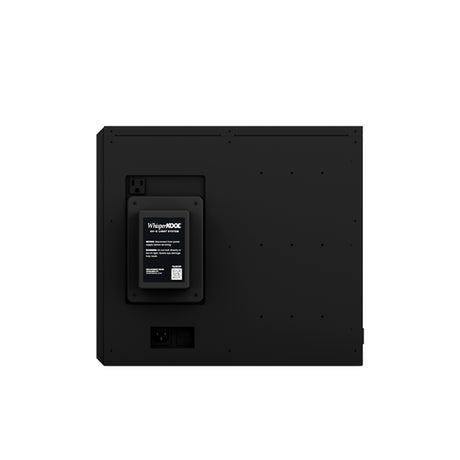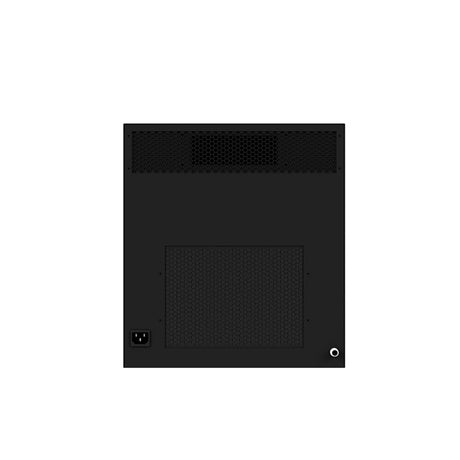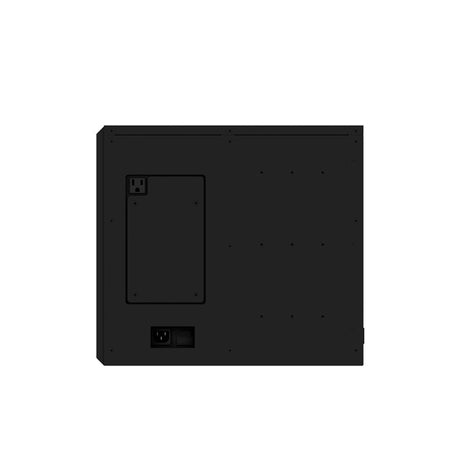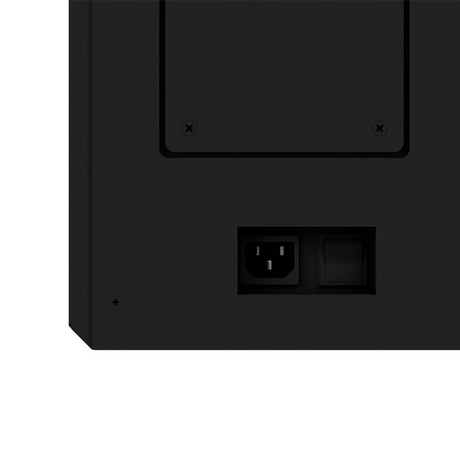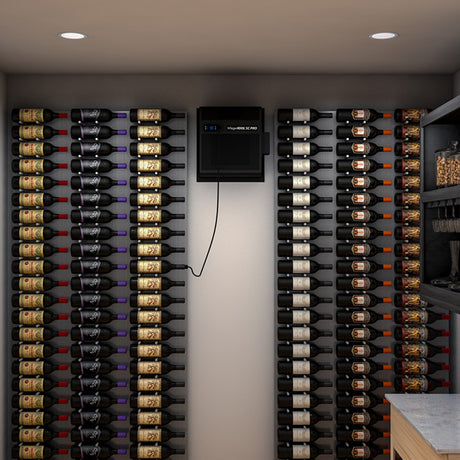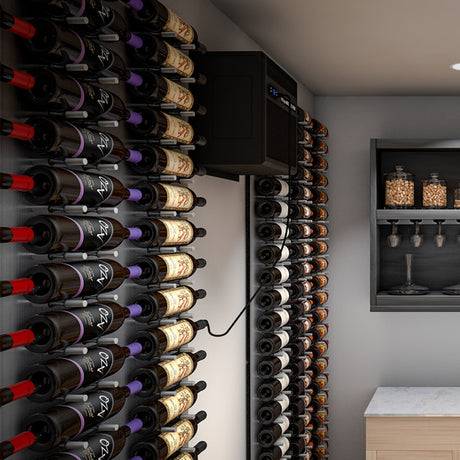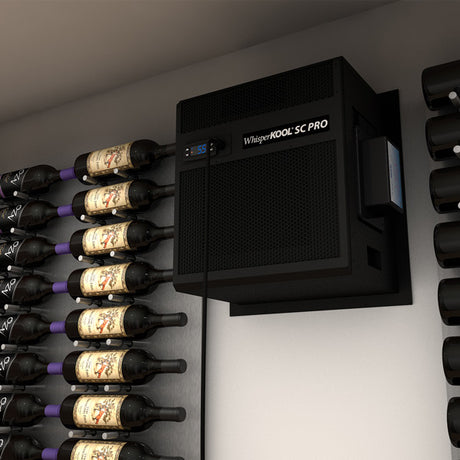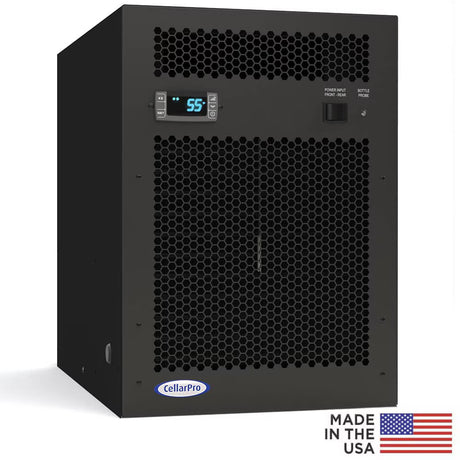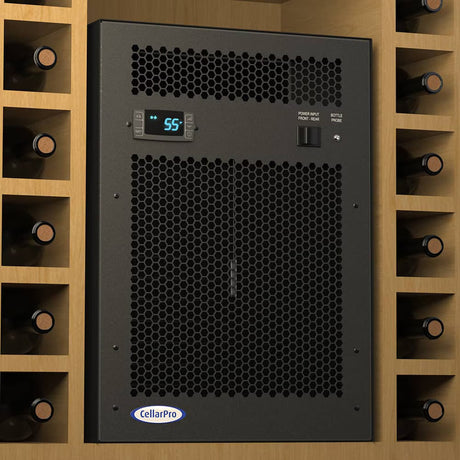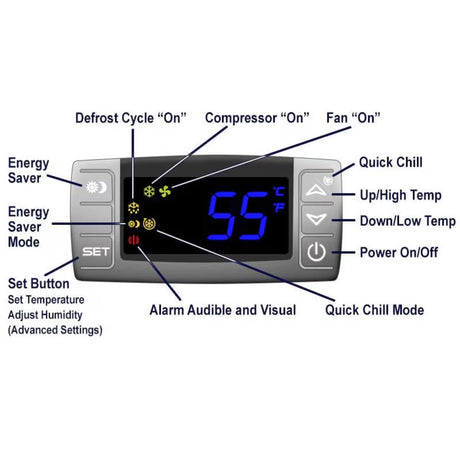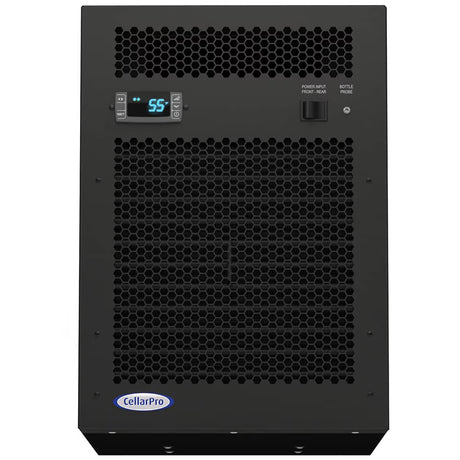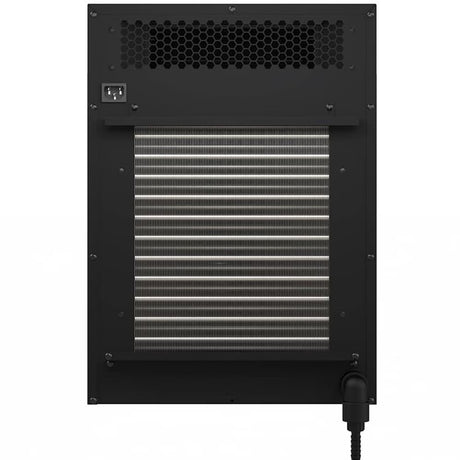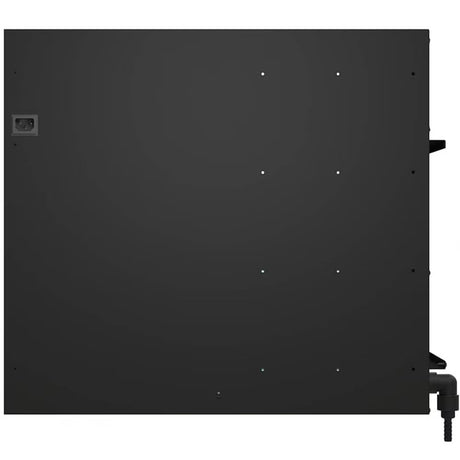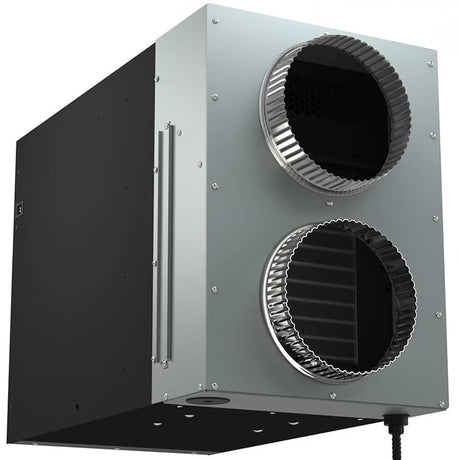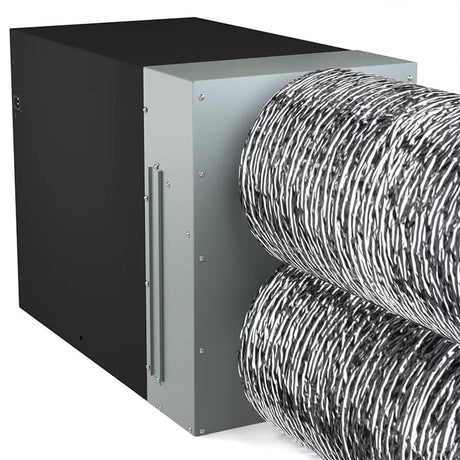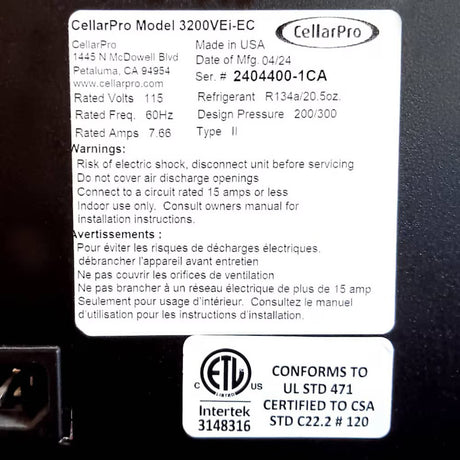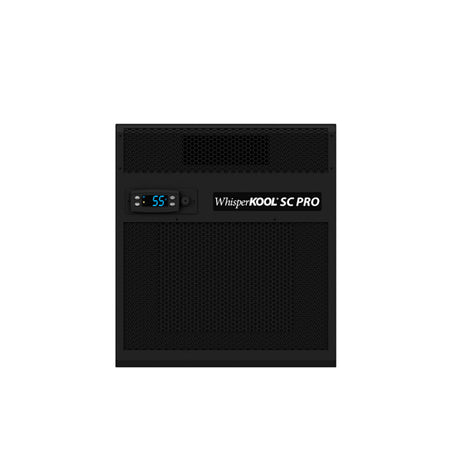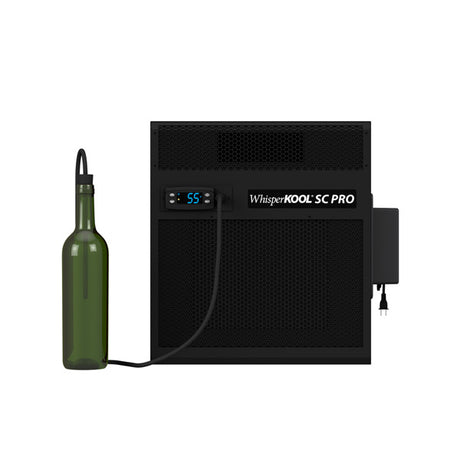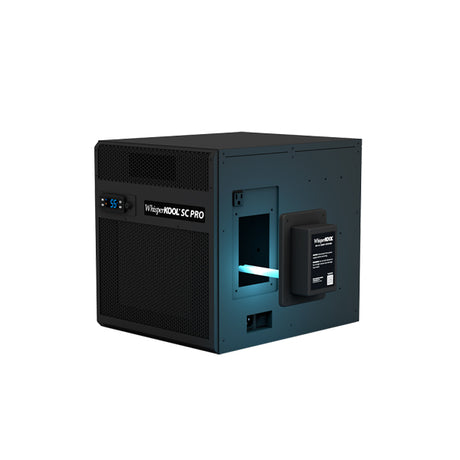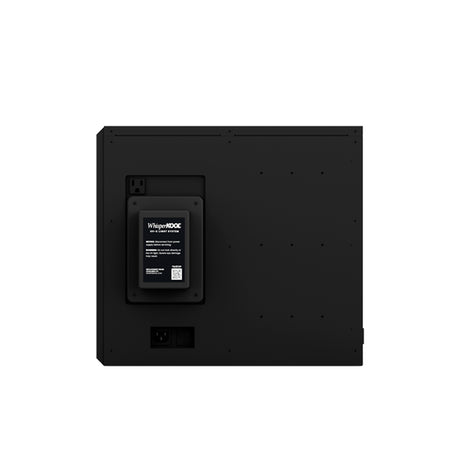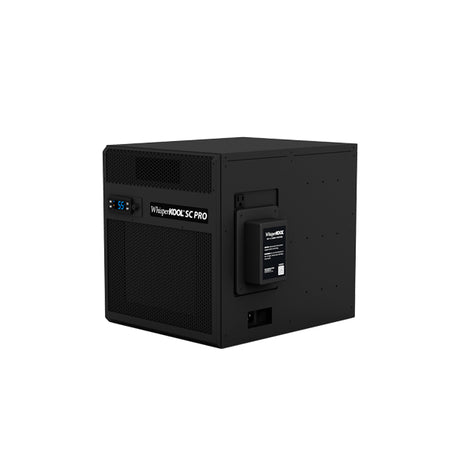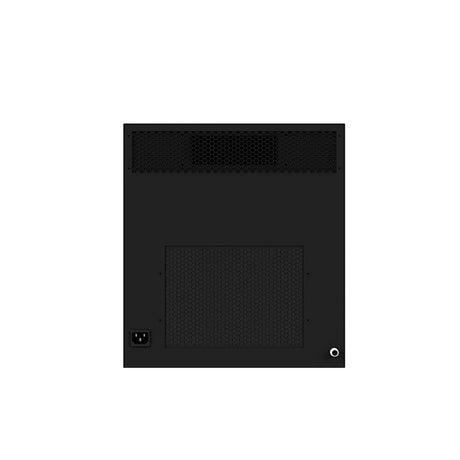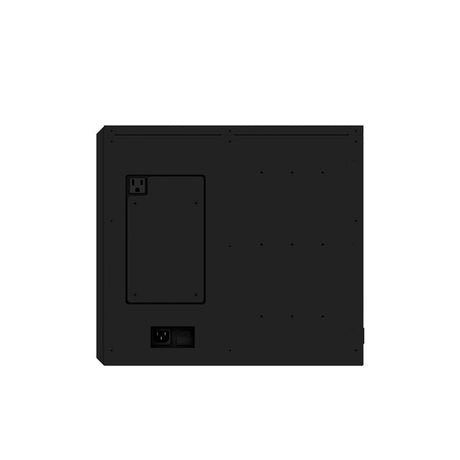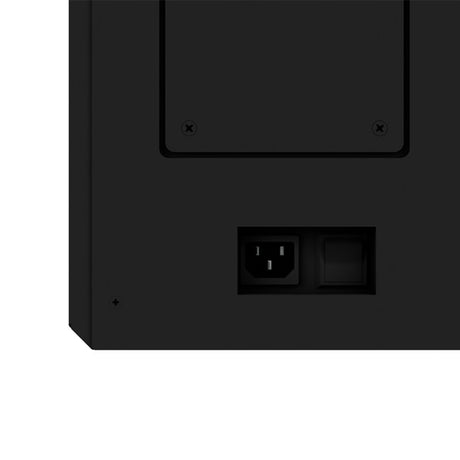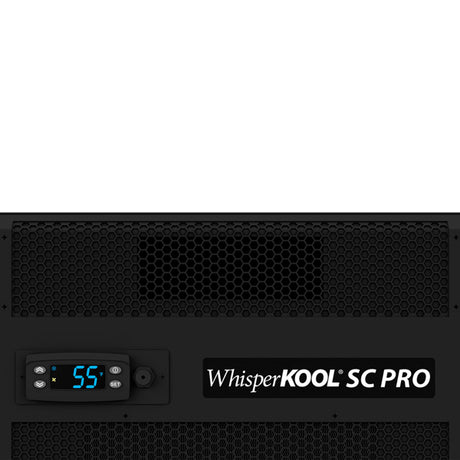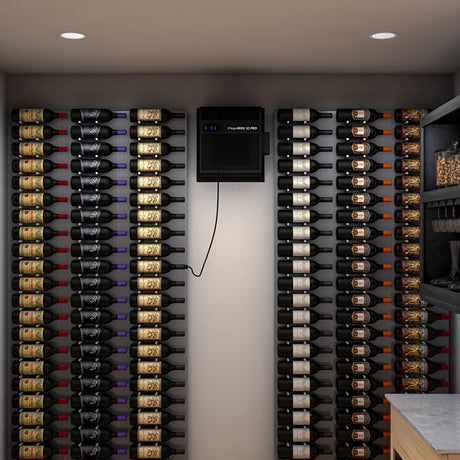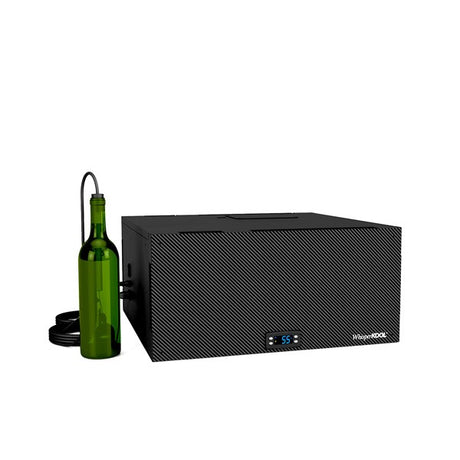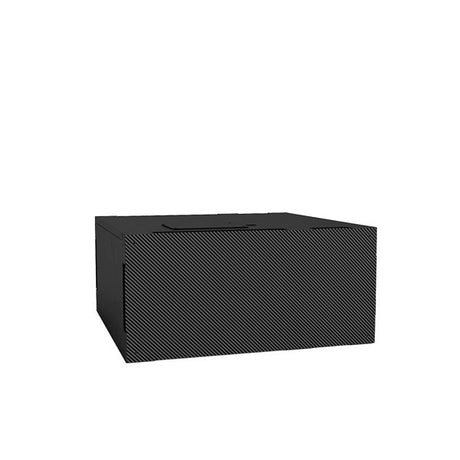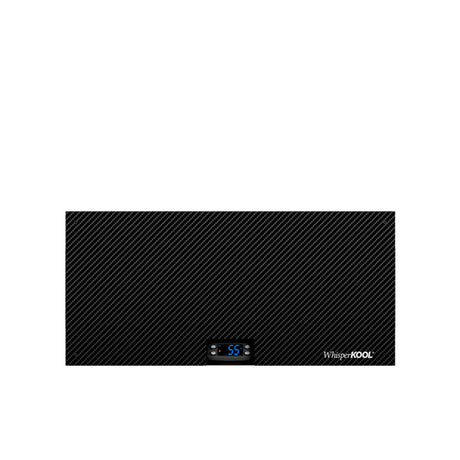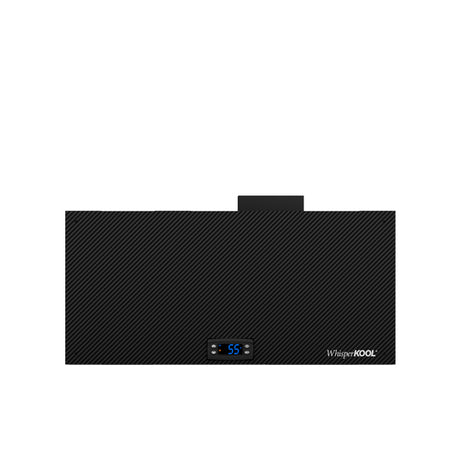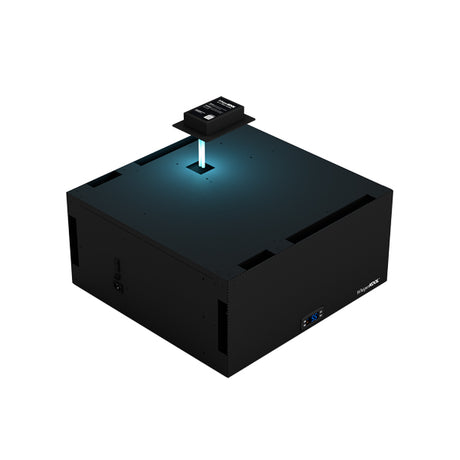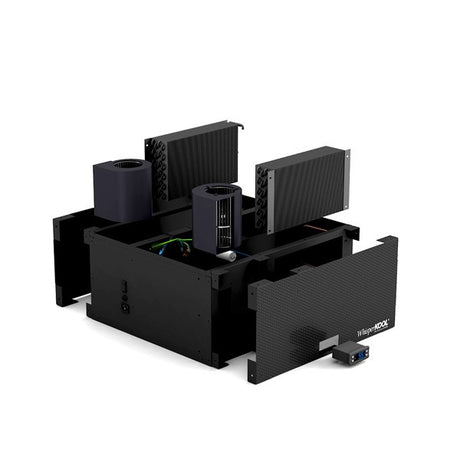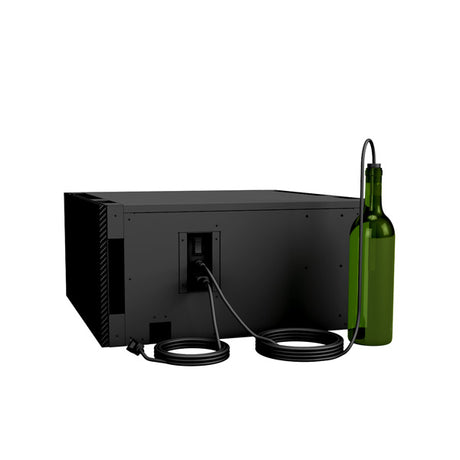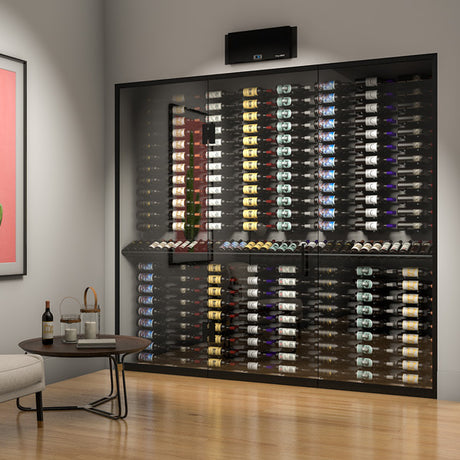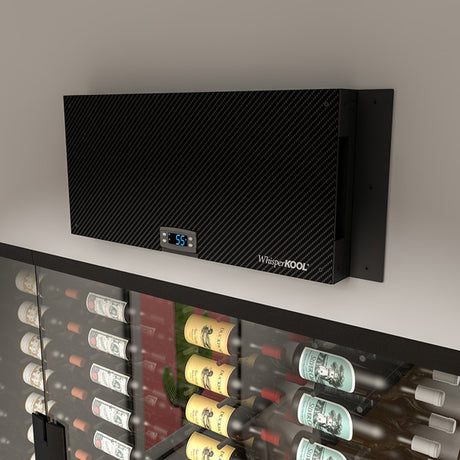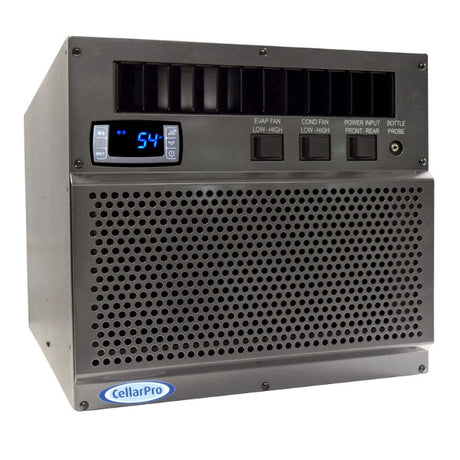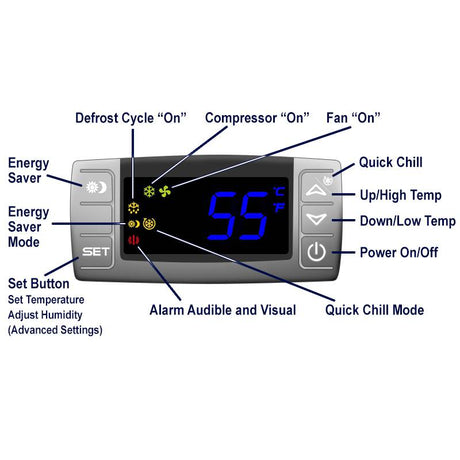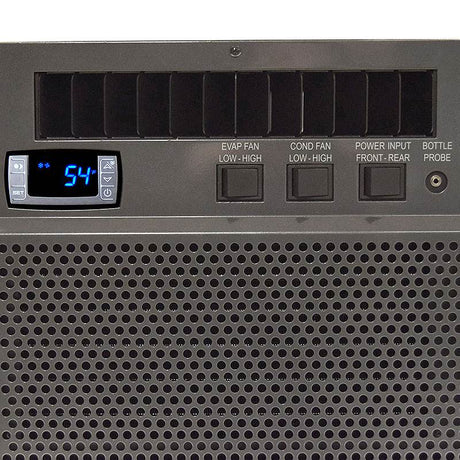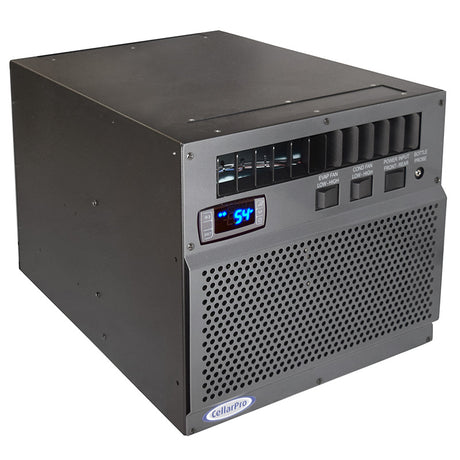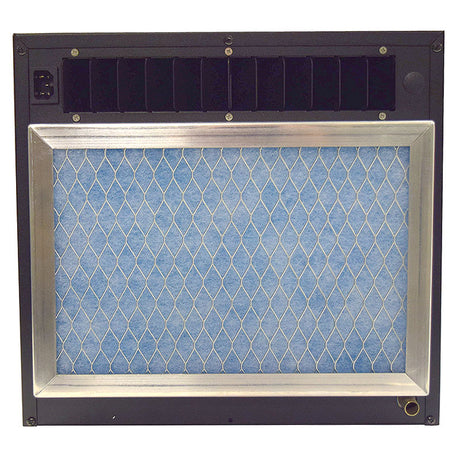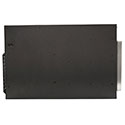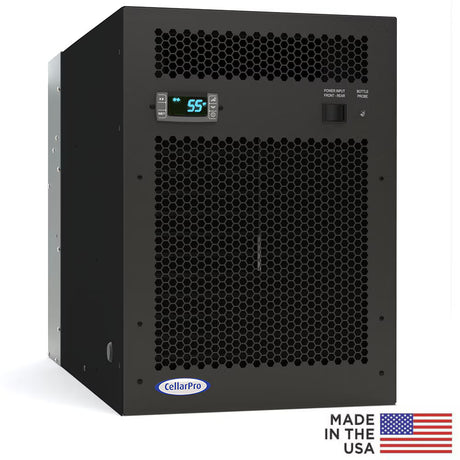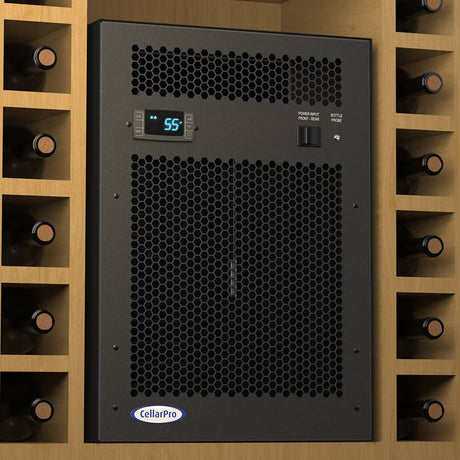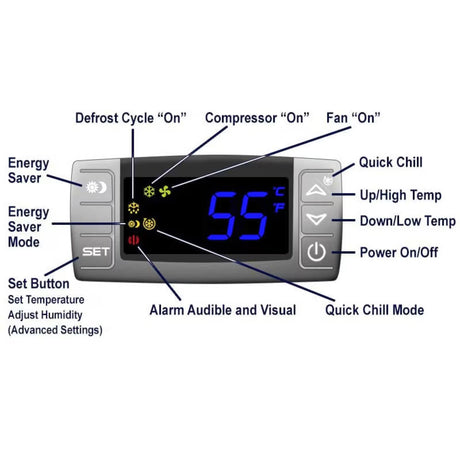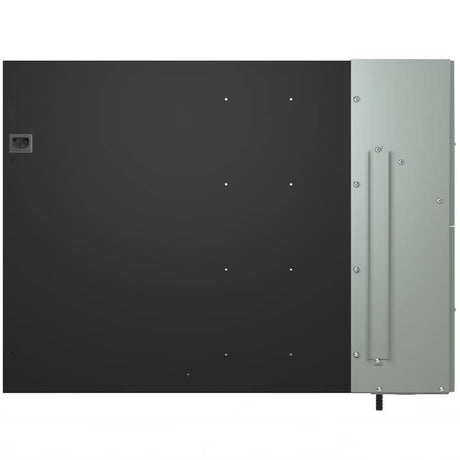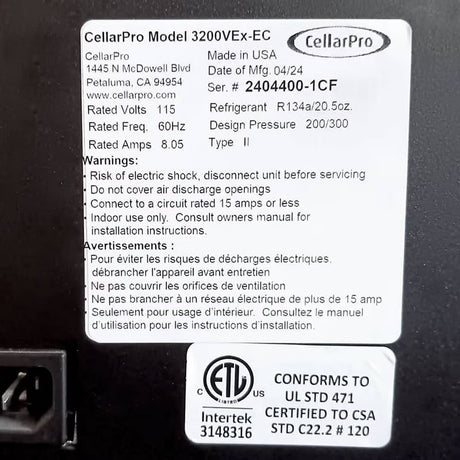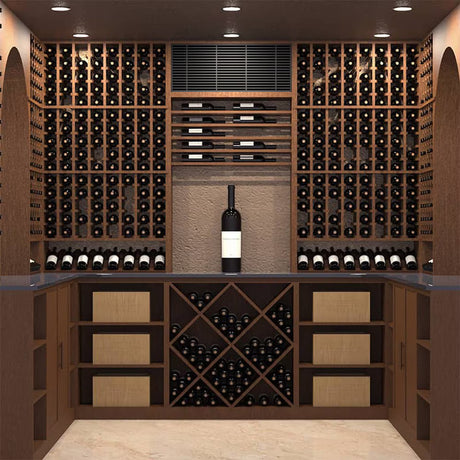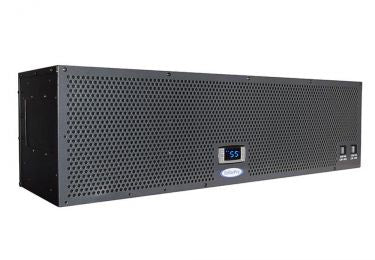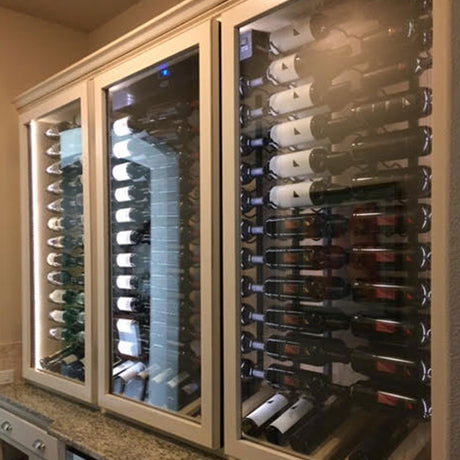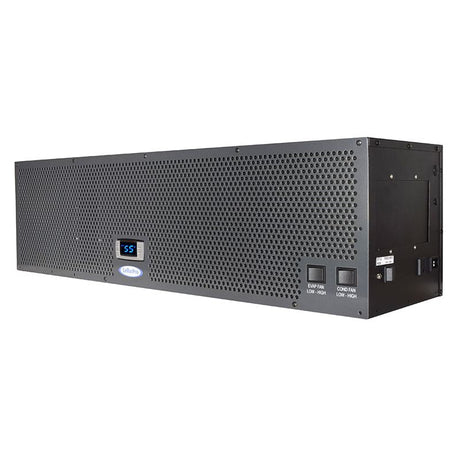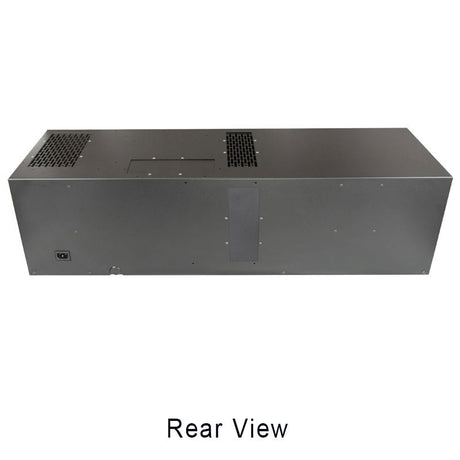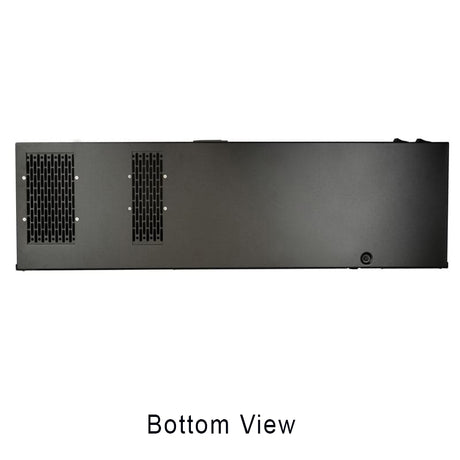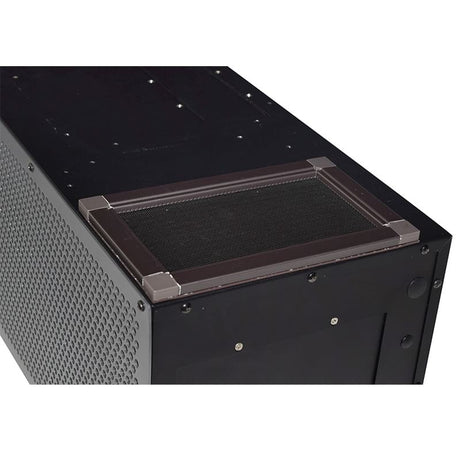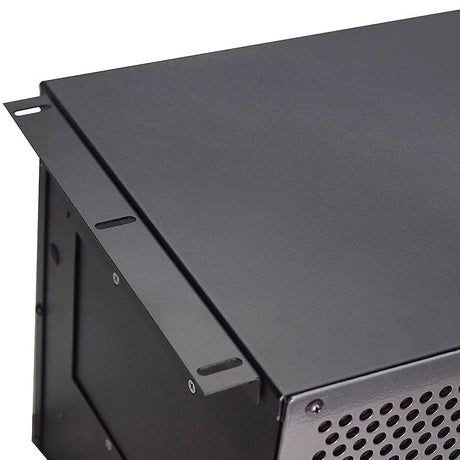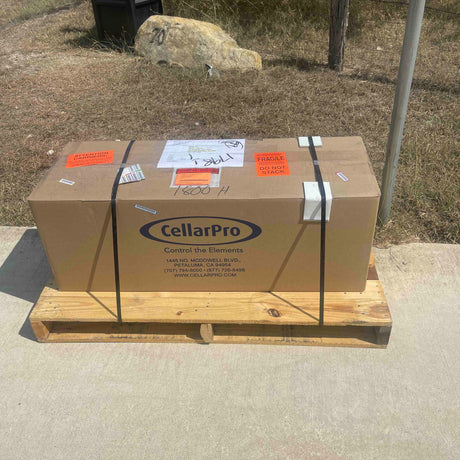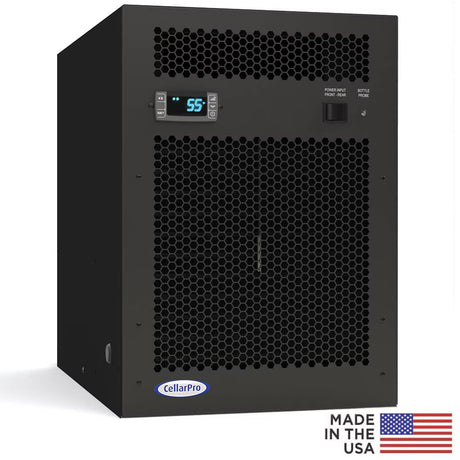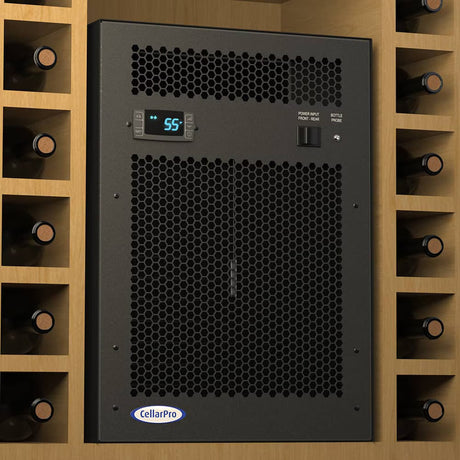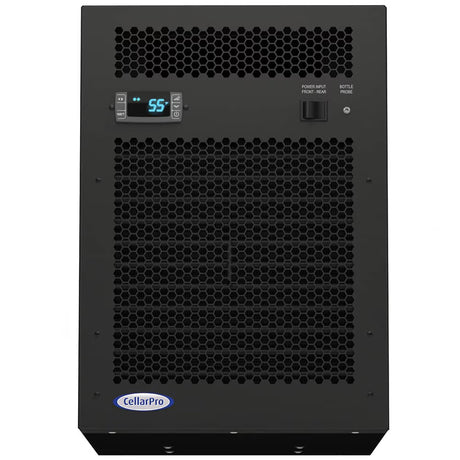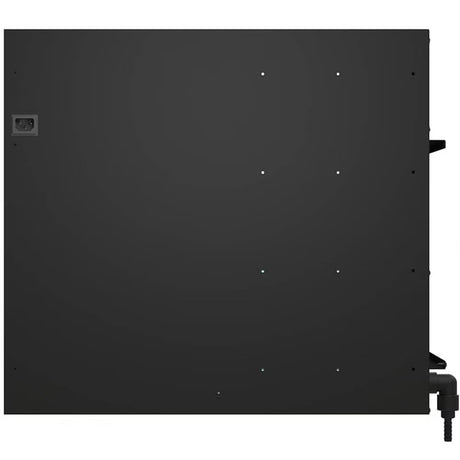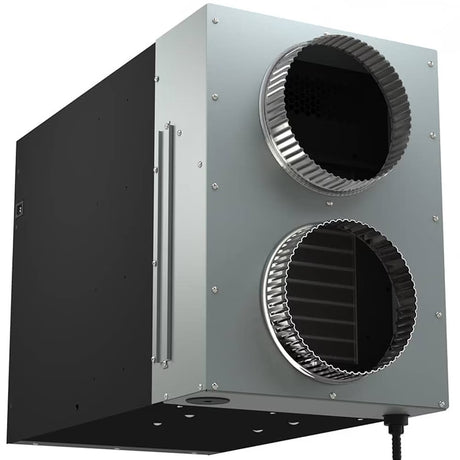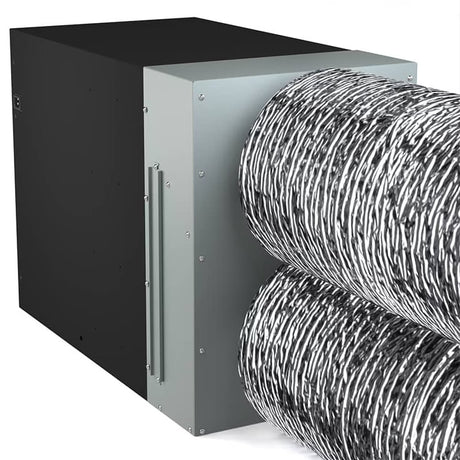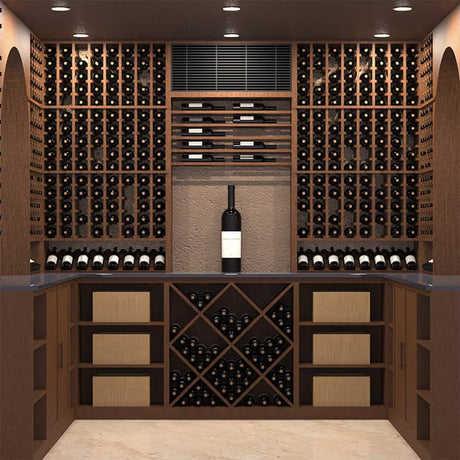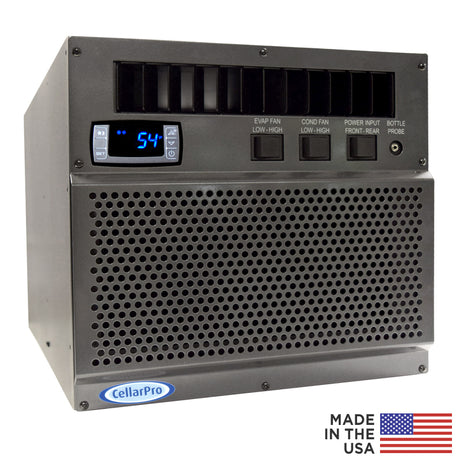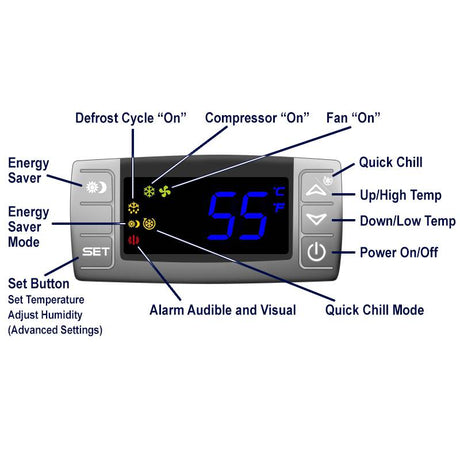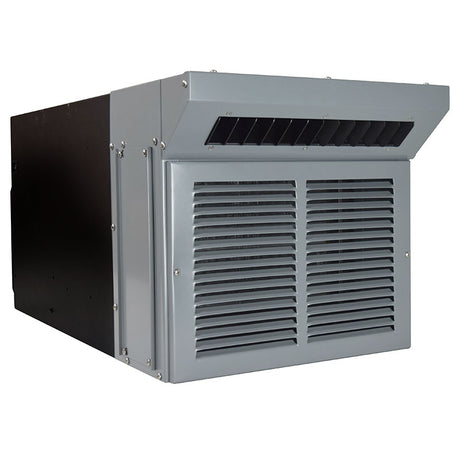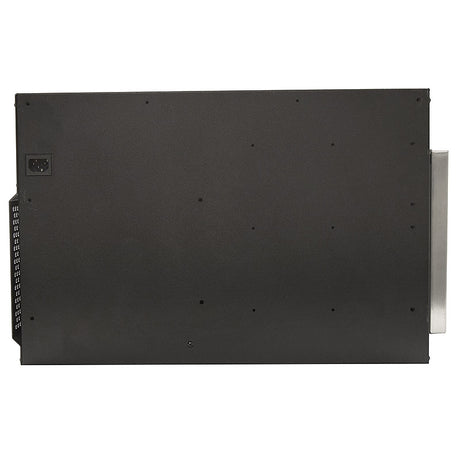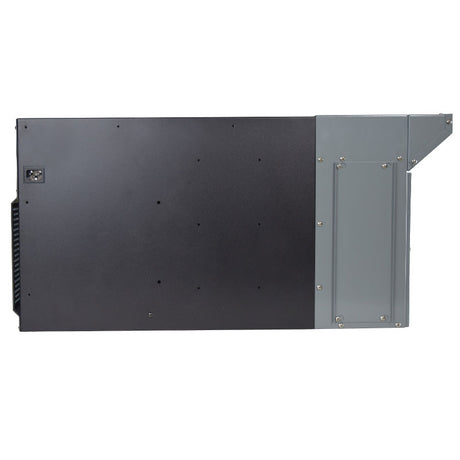Cooling Systems for a Small Wine Room

Your particular wine cellar size, the size of the surrounding open space, and other factors will help to determine which system is best for your needs. Don’t worry about trying to figure things out perfectly, our experts will advise you according to the structure of your space and your particular needs and wants in a wine cellar cooling system.
One of the key factors is efficiency. The unit you choose should suit the area it must cool. If it doesn’t, then it will need to work too hard to cool it, or at the other end of the spectrum, it will be wasting power on vented cold air in order not to over-cool the space. The key is to fit the size and type to the wine cellar space.
Most suits have a standard rear exhaust, with the option to customize it for a top exhaust (ideal for ceiling mounting). Some units will have built in humidity control, helping to remove excess moisture from your wine cellar. The simple to use thermostat keeps your cellar at a consistent temperature that you have full control over. One of the important things to remember is insulation, as if the cold air can escape, then you will use more energy in the unit, and risk not have a constant temperature.
Capacity & Coverage
Growing cellar or staying modest?
- Compact cellars: For wine rooms up to 300 cu ft, look at entry units like the CellarPro 1800QTL (80 cu ft) or WhisperKOOL SC PRO 2000 (up to 300 cu ft). Best for closets or cabinets. Small, lower BTU, and easy to maintain without an HVAC tech.
- Mid-size rooms: 300-499 cu ft options hit the sweet spot for most home conversions. Examples: CellarPro 1800XTS (up to 400 cu ft) or Breezaire WKL 2200 (up to 265 cu ft). These balance cost and cooling power, so you’re not overbuying.
- Larger small-cellars: Our range tops out at 500-999 cu ft, with heavy hitters like CellarPro 3200VSi (up to 800 cu ft) or Self-Contained 1/2 Ton 4200VEx (up to 1,000 cu ft). This is the ceiling for small units - bigger than this, check our large cooling systems.
Spec to watch: match the unit’s cubic foot rating to your cellar volume. Example: 6x8x8 ft = 384 cu ft needs a model rated at 400 cu ft. Over-sizing by 10-20% is safe, but go higher and you risk short-cycling.
Brands to choose from: Breezaire, CellarPro, CellarCool, N’Finity, WhisperKOOL. Each with models tuned to one of these capacity bands.
Shop all wine cellar cooling units here
Benefits of a Cooling Unit Designed for Your Smaller Space

-
Keep bottles steady, not stressed. A 5°F swing in one day? That’s enough to knock years off a wine. Units lock temps at 55-58°F, humidity 50-70% ±1°F, way tighter than countertop fridges drifting 50-62°F. Rule: 1°F above 58°F = 10% shorter bottle life. (Sounds dramatic, but it’s true.)
-
Insurance for your collection. Burgundy cases run $3,000-$8,000. Basements swing 30-90% humidity and 20°F daily shifts-corks shrink, labels mold, value drops 10-20%. A unit holds 55-65% ±5%, top shelf to bottom. Think Wall Street Journal's "Off Duty" section, not DIY basement hacks.
-
Fits where you actually live. Closet? 6x8 basement? Pantry? These systems cover 150-500 cubic feet. Oversize more than 20%? You get short-cycling. Numbers: 1,200 BTU = 250 cu ft, 3,000 BTU = 650 cu ft (with R-19 walls / R-30 ceiling).
-
Quiet when guests are loud. Old rigs ran 50-60 dB (window AC). Good units today? Under 40 dB (library quiet). Plus vibration isolation down to <2 microns/sec, so your '98 Bordeaux sediment stays where it belongs. No one wants to shout over a compressor mid-toast.
How to Choose a Small Cellar Cooling Unit?

Smaller spaces make wine storage easier to manage. They don’t require you to calculate the heat load of the cellar, or to track it over the cyclical changes in weather and seasons. A small room means a more stable environment with less work to keep it that way.
Steps in selecting the best system for your needs don’t need to be difficult or complicated. We suggest something like this:
- Familiarize yourself with the various sizes, styles, capacities and venting options available to you.
- Self-contained – the evaporator and condensing unit are in the same housing, often installed through the wall.
- Fully ducted self-contained – the unit is installed away from the cellar and the air is ducted to and from the cellar
- Split system – the condensing unit is outside the building or in another area, such as an attic; the evaporator is in the cellar itself; the two halves of the system are connected using a line set.
- Fully ducted split system – both the evaporator unit and the condensing unit are separate and have their own ducts; they are both mounted outside of the cellar
- From these, choose the one(s) that seems to best suit your needs.
- Discuss your choice with one of the experts in order to make sure you have considered all of the factors and clearly know your options and costs.
It is worth considering the noise factor when choosing a system. The self-contained and non-ducted split systems will both generate significant noise within the cellar. If you want or need a quiet cellar environment (for example to facilitate tastings, lectures, or small social events), a fully ducted unit is probably better suited to your situation. They can sometimes be more complicated and require more hassle when it comes to maintenance, but if you want a quieter cellar they are a must.
Shop all fully ducted systems here.
We have some further details on the types below:
Through-Wall / Direct Vent

Simple cut-in box. Cheap, covers 150-650 cu ft (1,000-3,500 BTU). Best for closets/pantries. Downside? Noise + visible. Buy 10-20% above your volume to handle insulation losses. Quick fix, not forever furniture.
Ducted / Remote System

Hidden system, ducts carry air. Dead silent inside. Perfect for glass rooms. Costs more ($3,000-$5,500 + ductwork). Handles 400-1,200 cu ft, 3,000-6,000 BTU. Check static pressure 0.25-0.5 in WC for 20-40 ft duct runs. Think Restoration Hardware chic, not basement storage.
Split System / High Precision

Compressor outside, evaporator inside, pro install. Tight climate control: 50-70% humidity ±3%, 4,000-8,000 BTU. Covers 500-1,500 cu ft. Ideal for 15-30 year cellaring. Basically the "collector's insurance policy."
Regular Maintenance and Inspection
Routine, regular inspections are highly recommended for any size of wine cellar. These inspections will not only make sure your wine cooling system is functioning as it should, protecting your investment in the wines themselves, but they will also be able to determine if your wine cooling system is inadvertently cooling down the rest of the building too. This is also a great time to give the unit or cellar a thorough cleaning.
The inspector will use thermal imaging technology to view the conditions of the cellar in detail, and to ensure that the system chosen is working as it should.
FAQs Before You Buy

- How much space do I need? Measure cubic volume. Example: 6x8x8 = 384 cu ft. Buy 3,800-4,200 BTU unit with R-19 insulation + vapor barrier. (Math, but worth it.)
- Through-wall vs ducted? Through-wall = $1,800-$3,500, noise into next room. Ducted = $3,300-$6,500+, silent + hidden. Which do you want to look at every day?
- How quiet is it really? Specs don't lie: sub-40 dB whisper, 42-48 dB fridge. WhisperKOOL SC Pro 2000 = 41 dB. CellarPro 1800QT = 38 dB.
- Will small units protect like a walk-in? Yes-if sealed right. Add vapor barrier (6-mil polyethylene) + insulation. Think Wembley, not nosebleeds-prep decides the view.
- What's the upkeep? Clean filters every few months, replace for $20-$40/yr. One annual tech visit: $150-$250. Easy win compared to losing thousands in spoiled wine.

